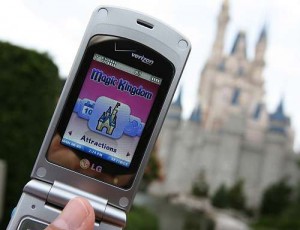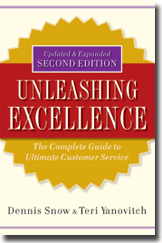High Touch Wins over High Tech
After weeks of stalling, I finally went out this past weekend to purchase a new computer and a new phone. Both rather challenging purchases because with all the various options and features on each product, I knew it would be a difficult decision in both cases.
The first stop was Verizon Wireless early Saturday afternoon. Upon entering the store, I was quickly greeted and asked if I needed help. I was taken under the wing of the salesperson who began asking pertinent questions as to my needs and usage for the phone. Within minutes; it was easy to make a choice, after which I was escorted to the checkout counter and introduced to Kim. Kim processed the purchase and before I could even form the question, she asked if I’d like her to transfer my contacts. Within minutes, she had activated my email, transferred my contacts, provided all the information to receive a rebate and I was out the door – a very happy customer with a brand new fully functioning Blackberry.
Now charged up after such a wonderful experience, I headed to Best Buy for the computer. I received my greeting upon entering the store and was shown to the computer section. A salesperson asked if he could help. With his knowledge and expertise, I felt comfortable and confident in choosing the right fit computer. He processed the transaction, gave me my receipts and thanked me for my business. I felt great again about this experience! What do people mean: high tech, no touch? Well, it was about to begin…. I asked if the information from my old computer could be transferred to the new one. Certainly, was the response – our Geek Squad can take care of that for you.
Promises made of 2 hours became 2 days. In trying to determine the status of my computer, I found that reaching someone in the department was nearly impossible. Questions that should have been asked were not, so the process was dragged out even longer. Finally, I went to the store and sat in the waiting area (they now have chairs provided so you don’t have to stand while waiting). Six people were waiting, one employee was working. After 20 minutes the line hadn’t moved, the gentleman next to me stood and said to no one in particular “OK, you win, I’m outta here”. I slid over one spot – all I wanted to do was pick up my computer! 45 minutes later out the door I walked only to be stopped by the greeter to “check” my purchase. A bad final taste was left with me, the high touch definitely missing after the product had been sold and ended up tainting the entire experience.
A Service Map is a tool to examine all the points of contact throughout the entire experience one has with an organization. Its purpose is to identify what is mediocre service at each point and how to raise the bar to make it Excellent at all possible and potential points, not just the “sales” point. See example Service Map
Recognition Can Make Dreams Come True
I was just sent a wonderful blog that came from the Journal of Wawa CEO Howard Stoeckel. Values Day to Remember Wawa is a chain of highly specialized convenience stores located over a 5 state area in the upper northeast United States. The company’s first store was opened in 1964 and their core purpose is to “simplify the lives of our customers”. They offer superior quality foods, fresh brewed coffee, gasoline and ATM’s.
Their core values include:
Value people
Delight customers,
Embrace change
Do the right thing
Do things right
Passion for winning
CEO Stoeckel walks the talk to instill these values and shares news and events to all employees through regular blogs. This one in particular is giving recognition to a highly deserving employee by the name of Samantha Eller who was awarded Wawa’s 4th ever Dream Maker award. The recognition was presented to her in front of 150 cheering associates, her parents and family. Yes, it was quite a dream come true as Samantha’s colleagues, friends and family all helped craft the perfect dream package which included a salon and spa trip, new wardrobe and a 5 day Disney cruise!
While extravagant, the CEO says the reward is trivial in comparison to the impact Samantha has had on her fellow employees. Every month, associates submit stories about their co-workers who exemplify the 6 core values. Samantha was selected from among 16,000 employees for her deep compassion and commitment to these values and her colleagues.
In our chapter on Recognition, we talk about the importance of Recognition to “inculturate” the Service Philosophy and Service Standards into an organization. Showing employees you appreciate and value the behaviors leads to repetition of the behaviors and they become contagious. Employees participating in acknowledging fellow employees allow their input and lets management free itself from the blame of favoritism that sometimes accompanies recognition that is always chosen by management alone. While wonderful to offer extravagant Dream Maker awards, the key we’ve found is really about the acknowledgement and “presentation” of the award. Simple recognition cards can be just as effective if done properly and sincerely. See example of a Sample Recognition Card
Solving a Customer Frustration
 One of the best ways to distance your organization from the competition is to solve a problem that frustrates your industry’s customers. A recent Orlando Sentinel article provides a great example of this approach: Disney by Cell Phone.
One of the best ways to distance your organization from the competition is to solve a problem that frustrates your industry’s customers. A recent Orlando Sentinel article provides a great example of this approach: Disney by Cell Phone.
The number one guest complaint at Walt Disney World is about long wait times for the rides. And over the years Disney World has implemented several tools to help minimize the problem. Tools include:
- Wait time signs
- Entertainment while waiting in line
- Making the line part of an attraction’s theme or “show”
- Tip boards around the park with posted wait times for popular attractions
- FastPass® (a mechanism for making a “reservation” for particular attractions)
Disney World (and Disneyland) has just introduced a new way to help reduce wait time frustrations for Disney guests – “Mobile Magic.” It’s a smartphone application that allows guests to get real time information about attraction wait times, character greetings, and other park events. The application allows guests to get the most out of their Disney visit by helping them make informed decisions about what to do next.
The full application of Mobile Magic is only available to Verizon subscribers right now, but a scaled down version is available to subscribers of other mobile services. The full application will soon be available to anyone with a cell phone.
The reason for sharing this story isn’t to brag about Disney, it’s to point out an example of a relentless quest to solve an ongoing customer frustration. Every industry has its inherent customer frustrations, and most companies just accept them as givens. But customers don’t accept them as givens; we see them as reasons to look for alternatives.
You don’t have to do an expensive survey to find out what frustrates your customers. You know exactly what frustrates them. Those recurring complaints and those negative customer interactions that burn out your employees tell you what the problems are. What’s needed is action.
So we challenge you to pick one customer frustration that you’ll commit to solving. Start small if necessary; but commit to one. Bring in some employees from your operation and go to work coming up with and implementing a solution. Or you can use this link to a Service Improvement Meeting agenda which guides you through a team meeting for identifying and developing solutions to customer frustrations. Once you’ve solved a problem, go on to another one.
Of course, Unleashing Excellence devotes an entire chapter to solving customer frustrations – “The Service Obstacle System.” The approach outlined in the chapter provides a step-by-step approach for crafting a barrier-busting system.
Imagine if you just identify and solve one customer frustration per quarter. Four improvements a year is huge! It will put you in the “world-class” category, and customers will wonder, “Why can’t other organizations do it like they do?”
Please send us your questions, or share examples of how your organization (or any other organization) has solved a customer frustration. We hope to make this blog a forum for best practices!
